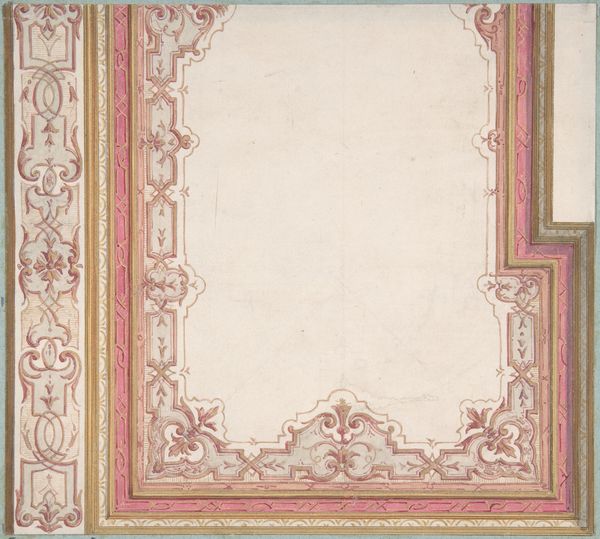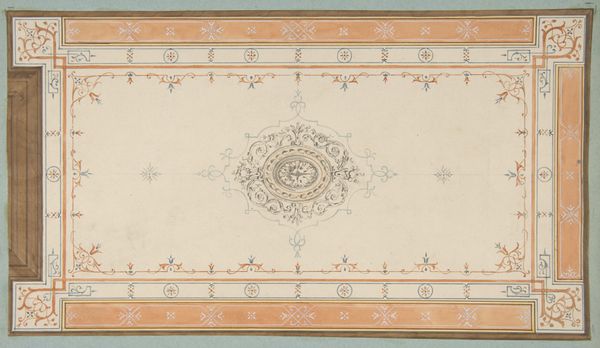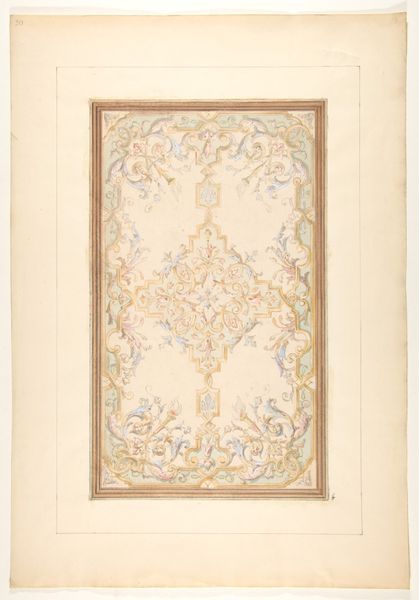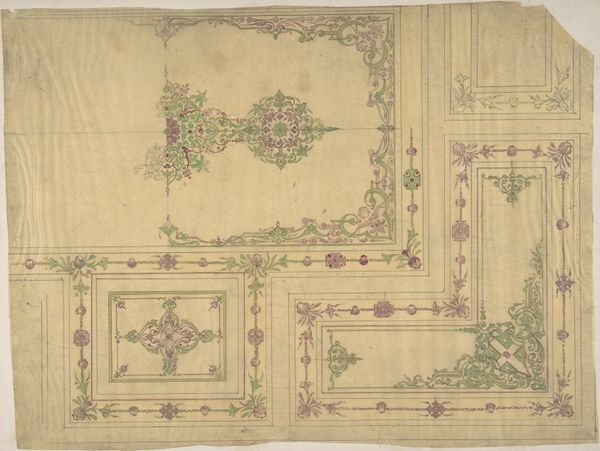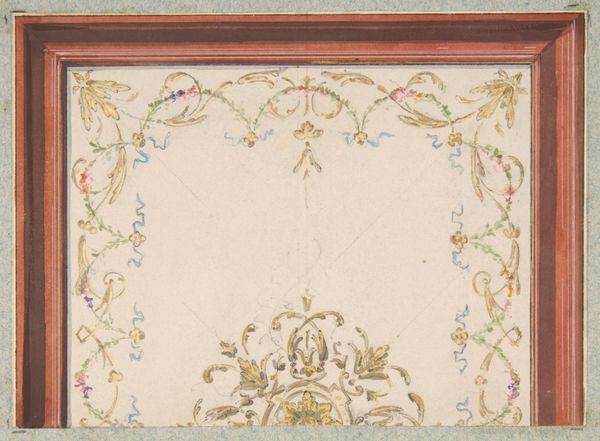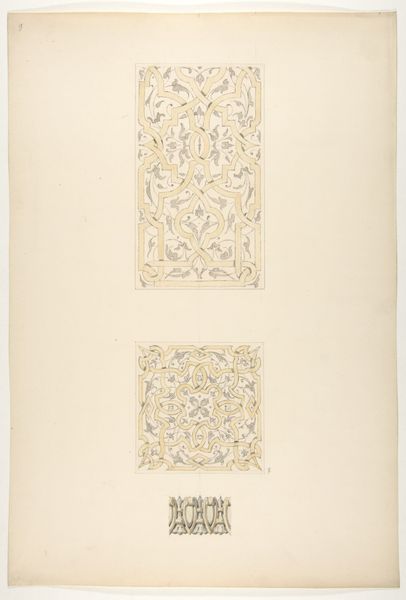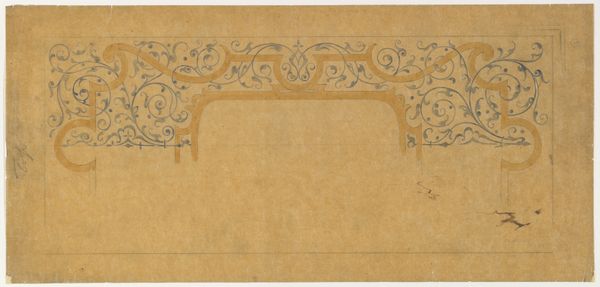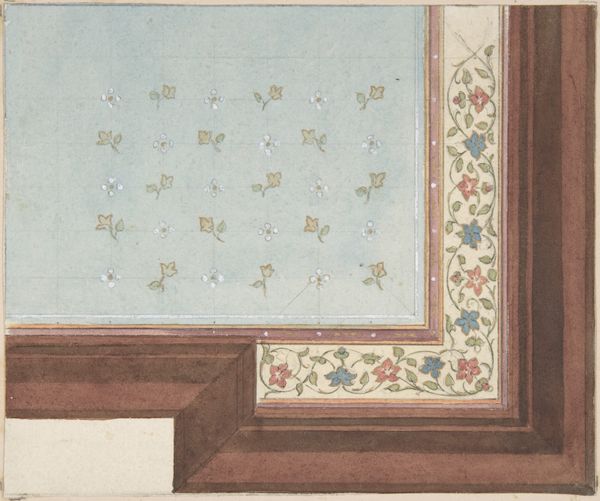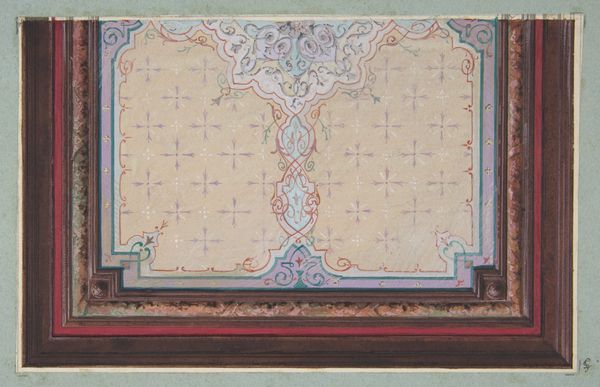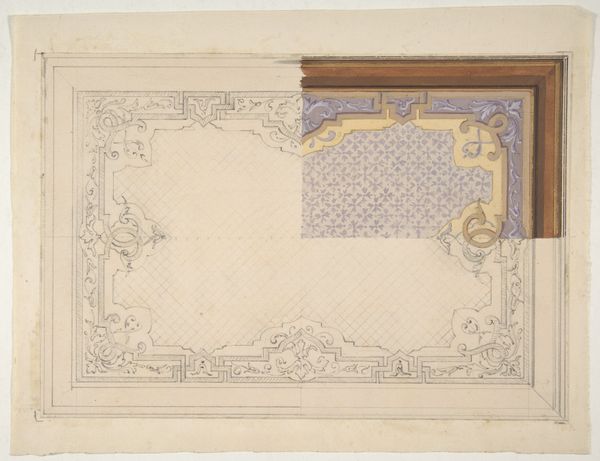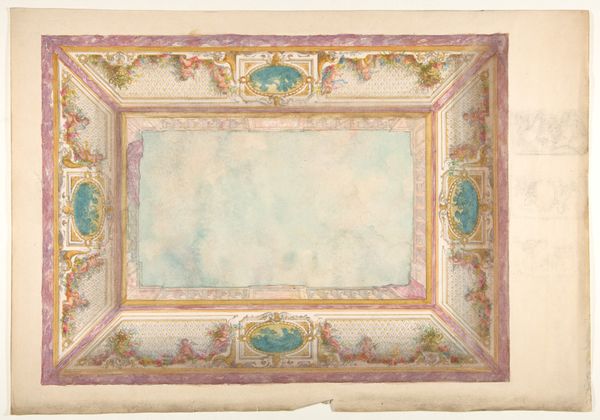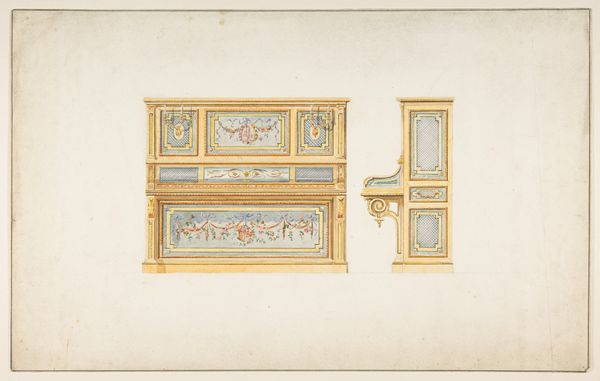
Dimensions: Overall: 10 15/16 x 10 5/8 in. (27.8 x 27 cm)
Copyright: Public Domain
Curator: Alright, let's dive into this intriguing piece titled "Designs for Painted Panels," created by Jules-Edmond-Charles Lachaise sometime between 1830 and 1897. It's currently residing at the Metropolitan Museum of Art. What springs to mind for you? Editor: It feels… delicate. Almost ethereal. Like a forgotten dream sketched on parchment. The colors are so muted, a gentle dance of watercolors on paper. There’s a haunting tranquility, don't you think? Curator: I absolutely agree! The delicacy speaks volumes, particularly in the context of the decorative arts during that period. It whispers of Romanticism and perhaps a yearning for simpler times. What do the patterns suggest to you? Editor: The ornate borders and floral motifs… they echo familiar themes of elegance, status, and an attempt to domesticate the natural world. The geometry speaks of a controlled beauty, while those pale reds seem almost like fleeting embers of passion. This piece shows a transitional cultural era when romanticism influenced architectural trends in this specific way, if I understand correctly. Curator: Precisely! And, let's not forget that this is a *design*. It’s intended for architectural painting and is hinting at something grander and permanent than just a drawing. Imagine it scaled up, adorning walls and ceilings. It has a dual identity - an idea for functional objects or decoration elevated into the art world. Editor: It certainly bridges the gap between functionality and fantasy, then. And what about that repeating motif - almost like a star? The symmetry, the way it’s only fully realized on one panel, almost gives a sense of yearning. A motif represents something to be complete, as though someone intentionally omitted the others on each panel, allowing for multiple perspectives of this artwork's meaning and its message. Curator: Absolutely! It’s like a whisper of possibility left unfulfilled. It's funny to me how these motifs and flourishes were to mask plain architecture from this era. Do you see this sort of ironic statement behind such Romantic artwork that became decorative art? Editor: The notion of hiding or transforming the everyday reality… that rings so true! The panel becomes like a portal, drawing us away from mundane and routine reality into a dreamscape of beauty and grace. A brief escape from harsh reality. I can see why people love these watercolors. Curator: Couldn't agree more! So, we had this fascinating sketch, full of historical echoes. A springboard to somewhere else... that's not bad for two minutes! Editor: Indeed. A brief dance with a half-remembered dream…I like it.
Comments
No comments
Be the first to comment and join the conversation on the ultimate creative platform.
